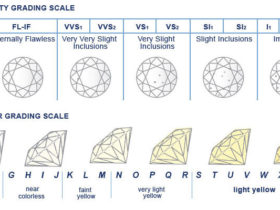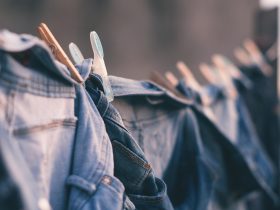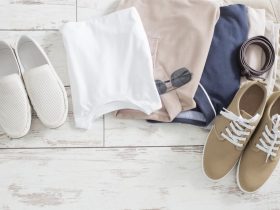With roots spanning across history, fashion plays a major part in daily life around the world. The clothes you wear, accessories you own, and brands you support offer clues about your personality, country of origin, income bracket, and more.
Despite its importance in both modern and past culture, however, fashion also has a dark side: The sad reality is that the fashion and beauty industries are responsible for an inordinate amount of pollution. For example, the textile production process (that is, the fabrics, yarns, and other notions used to manufacture cloth) pumps about 2.1 billion tons of greenhouse gases into the atmosphere on an annual basis. That number equals 4% of total global emissions.
So-called “fast fashion” is one of the biggest culprits in terms of environmental impact. The fast fashion business model involves mass production and low prices compared to high-end couture and designer brands. Unfortunately, unethical production practices, including child labor, low wages, and abysmal working conditions, are rampant within the world of fast fashion.
In recent years, however, fashion industry leaders and consumers alike have led the change towards a more sustainable future. Innovative solutions include the use of reusable, sustainable resources in the production of fabrics, subscription services that reduce textile waste, and addressing unfair labor practices in every corner of the industry.
Here’s what you need to know about how your fashion and style choices can impact the natural world, and how you can make a difference.
Innovations in Sustainable Fashion
Considering the significant environmental impact of textile production, it is in this arena wherein a push towards sustainability can have the greatest impact. By necessity, our ancestors turned to the natural world when sourcing textile materials. Linen, made from flax fiber, is one of the oldest known fabrics in existence, used by ancient civilizations around the globe.
And in modern times, innovative fashion designers are also sourcing sustainable fabrics from the natural world. Bamboo and hemp are among the most well-known plant-based fabrics, and the industry continues to search for other viable alternatives in nature. Even mushrooms have been tapped as a potential source of sustainable textiles, especially when smart fungus is paired with hemp.
From fungi spores to flax seeds, various natural fibers are increasingly taking the place of cotton and popular synthetics such as nylon and polyester, which are harmful to the environment. Nylon is cheap to produce, but also non-biodegradable. Additionally, the nylon production process releases nitrous oxide, a dangerous gas more potent than carbon dioxide, into the atmosphere.
Reduce, Reduce, Subscribe
Alongside the search for sustainable, carbon-neutral textile sources, the fashion industry is tackling the issue of emissions in numerous ways. Interestingly, the subscription economy has played a part in the push towards a more sustainable future.
For many of us, the concept of subscription commerce likely centers around entertainment, including movie and music streaming services. But research indicates that more and more consumers are purchasing goods and consumable products in the form of recurring subscription boxes. Many modern consumers want a shopping experience that’s both affordable and personalized, and subscription box services help meet that need. Within the world of fashion, myriad companies offer monthly subscription box services, including Goodfair and thredUP.
And in terms of sustainability, subscription boxes come with additional perks. The aforementioned companies have built a business model akin to that of a brick-and-mortar thrift shop. Gently used, unwanted clothing is carefully curated and given a second chance at life, using significantly fewer resources in the process.
Making a Difference with Your Dollar
What’s more, buying secondhand clothing, whether in a monthly subscription box or a local thrift shop, may make a dent in the fashion industry’s waste production numbers. According to the Environmental Protection Agency (EPA), more than 11 million tons of textiles ultimately ended up in U.S. landfills in 2018. The organization further reports that discarded clothing is the primary source of textiles in municipal solid waste (MSW).
As such, wearing secondhand clothing is one of the best steps you can take to help reduce your overall carbon footprint and keep waste out of landfills, but eco-conscious fashionistas can make an impact in other ways as well. Less energy is used when you do your clothes and accessories shopping at local, independent stores, for example. You can also research your favorite clothing brands, and see how they fare in terms of sustainability and materials used in textile production.
As we continue to feel the effects of climate change, the importance of sustainability has become abundantly clear. Every aspect of our lives is affected, and every choice we make counts, from the foods we put in our bodies to the clothes we wear and the brands we support. No matter which side of the fashion industry you’re on — whether consumer, designer, or retail sales associate — we must all do our part to help bring about a brighter, healthier, more sustainable future.












Leave a Reply